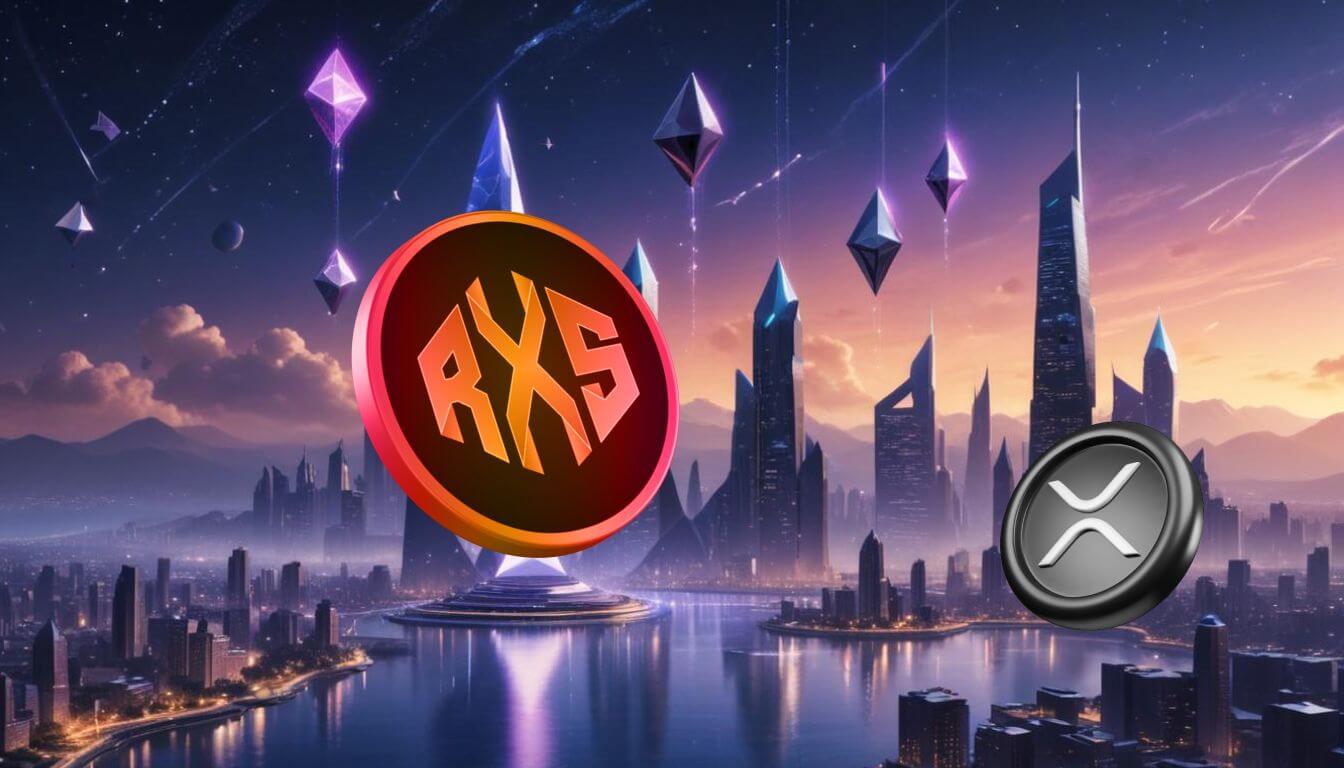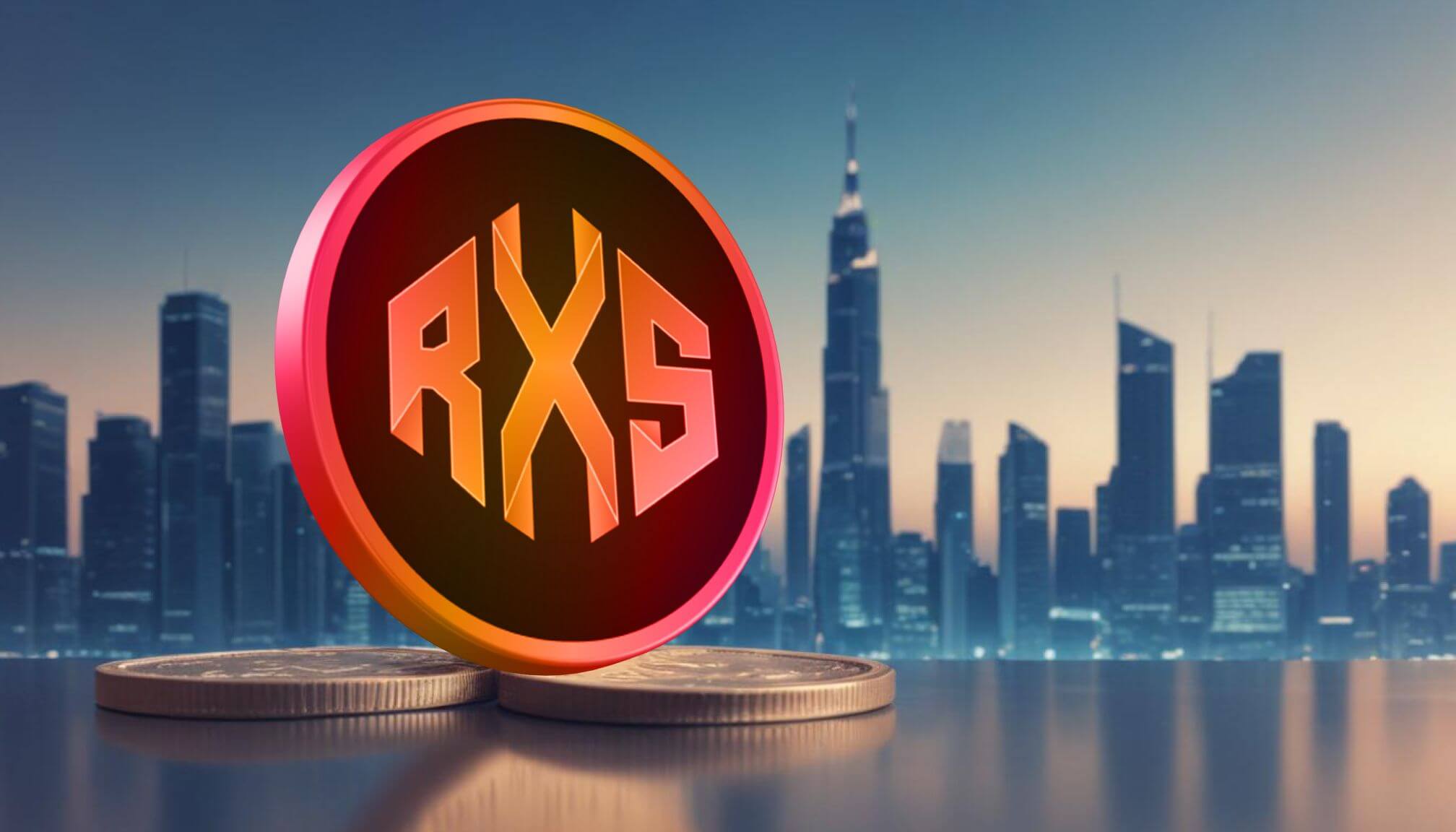What is Chainlink & How Does it Work? - LINK for Beginners
Chainlink is one of the most popular cryptocurrency projects in the world today, offering more than just the native LINK token as a virtual currency. Officially launched during the crypto boom of 2017, Chainlink has seen rapid expansion amid the recent explosion in decentralised finance (DeFi).
The Ethereum-based network provides for an ecosystem that connects real-world data and smart contracts on the blockchain, enabling a decentralised and secure interaction for millions of users. This article highlights what Chainlink is and gives you a detailed overview of how it works across multiple blockchains as the cryptocurrency gains mainstream adoption.
Why Was Chainlink Invented?
The use of blockchain technology has grown to encompass more than just access to peer-to-peer online money transactions. One of the biggest uses today is via smart contracts technology that allows people to enter into agreements that automatically execute if defined conditions are met.
These agreements live on the blockchain, making them tamper-proof and secure. However, there is a problem when smart contracts need to access external data as part of their automated functioning.
The issue here is that blockchains have no inbuilt mechanism to access external data. They rely on data feeds, which provide everything from information on things like prices, insurance, temperature, and the Internet of Things.
The other problem is that data from third-party APIs for market prices or such other information might not be accurate. Chainlink offers the technological solution to this problem through its network of decentralised nodes called oracles. The oracles provide accurate data and Chainlink incentivises them via a reward system that uses the LINK token.
How Does Chainlink Work and What Technology is Behind It?
Chainlink relies on a network of oracles to bring secure and trustworthy data for on-chain integration in smart contracts. This technology works via three types of contracts—order-matching, reputation, and aggregating.
Here is how it works:
When a smart contract user needs to connect to a real-world data source, they put out a service level agreement (SLA) request through the Chainlink protocol.
Chainlink then uses the information in the request to select oracles (order-matching) to provide the needed data.
Oracles process the real-world data and report it on the blockchain, a process by which an internal system validates the sources for accuracy. This last step works via the aggregating contract where the most accurate result from the oracles is input on-chain.
Those wishing to access the real-world data pay a small fee, which is deposited in the native LINK token and goes towards incentivising the nodes.
As demand for Chainlink’s technology increases, issues of scalability have cropped up. However, the team behind the project has initiated a second layer network it calls Chainlink 2.0. The new project offers “decentralised oracle networks” (DONs), which allow oracles to work on external data sources off-chain before registering it on the blockchain.
The growth associated with the adoption of DONs is set to put Chainlink at the forefront of bringing traditional data inputs on-chain for smart contract execution.
Is Chainlink Real Money?
You may not call Chainlink “real money” but that does not mean it cannot be used as money. To be precise, the LINK token has value, and that in itself allows it to function in the ecosystem as would any other currency in a monetary system.
You can send and receive LINK as well as deposit it in DeFi protocols to earn a reward, just like you would earn interest on your savings account.
It is also worth mentioning that the token carries a “currency” aspect to it as it has evolved much like other cryptocurrencies to see acceptance at merchant points across the globe.
Like Bitcoin and other top cryptocurrencies used as money, LINK has a fixed supply of 1 billion tokens. It is much higher than Bitcoin’s 21 million but is nonetheless key to the cryptocurrency’s overall long-term value based on the principle of supply and demand.
At the time of writing, the circulating supply stands at around 419 million tokens with the price of LINK against the US dollar at $38. The token might be worth much more in the next few years.
Fees and Expenses of Chainlink
Like other cryptocurrency projects, Chainlink has associated costs and fees. However, fees are generally minuscule and depend on what aspect of the protocol you are using.
The first main expense users incur on the platform is when requesting external data. Oracles or node operator(s) charge fees to provide the data needed, and each oracle sets its fees. So, when using the protocol, note that the fees may vary.
By default, nodes set gas prices at 20 Gwei, but they have in the past risen substantially because of Ethereum’s network congestion.
Exchanges and brokers also charge fees when you transact on their platforms—sending, receiving and trading Chainlink. There are, therefore, costs related to deposit fees, trading fees and withdrawal fees. Most exchanges and brokers do not charge deposit fees, but you might pay between 0.1% and 0.2% for every trade you make. Withdrawals also attract varied fees, ranging from as low as 0.7 LINK to 10.0 LINK (at the time of writing).
What are the Benefits of Chainlink?
One of Chainlink’s most beneficial features is connecting blockchain smart contracts to data sources in the real world.
Oracles are critical in the blockchain and crypto sector. Decentralised exchanges (DEXs) and decentralised finance (DeFi) protocols use oracles, the former to access cryptocurrency prices and offer the same to customers.
By providing access to off-blockchain sources to on-chain smart contracts, Chainlink also helps increase the security of information and its accuracy. Chainlink also allows for trustless transactions and communication, with no need for a central authority.
Through an end-to-end decentralised and blockchain agnostic capability, the crypto community enjoys cross-network connectivity. Now users on both public and private blockchains can benefit from accurate data sources.
The use of a network of oracles means that there’s no single point of failure in case one of the nodes is compromised.
Can Chainlink Be Used Anonymously?
Chainlink is an Ethereum-based protocol platform, with the Ethereum blockchain providing for anonymous transactions. The blockchain is however public, which means all transaction records and addresses are visible. In this case, one cannot identify a user just by looking at the wallet address. You can therefore use Chainlink anonymously in this manner and it will remain so as long as no one links the address to an actual identity.
How Safe is Chainlink?
It might not be easy to tell just how safe a cryptocurrency project is. This is because the nascent sector is still putting into place mechanisms to make projects more secure. But blockchain in itself is secure and Chainlink benefits from components such as tamper-proof and censor-resistant transactions.
For Chainlink, a growing ecosystem that benefits from decentralisation, the use of provably secure nodes has improved the safety of all users on the network.
The oracles also operate in a transparent environment, with network users able to publicly view and interrogate their reputation. Importantly, the oracles cryptographically sign all data before forwarding it to the network for aggregation.
Given the potential for attacks and data manipulation, Chainlink has developed a proof-of-reserve (PoR) mechanism that is key to ensuring data integrity.
In the DeFi sector, where users depend on real-time data, the PoR algorithm shields them from potentially fraudulent activities that might originate from off-chain sources. In this way, both the decentralised finance protocols and traditional finance systems can operate in a safe environment.
What Teams are Working on Chainlink Development?
Chainlink has one of the most tech-savvy teams in the space and benefits from the work of a world-class group of developers. There is also a dedicated team of advisors, some of them from the world’s top academic institutions.
The Chainlink team includes:
- Sergey Nazarov
Nazarov is the co-founder and CEO of Chainlink, having founded the company SmartContract that began the project in 2014. Sergey also founded the crypto exchange Secure Asset Exchange and decentralised email service CryptoMail.
- Steve Ellis
Ellis is the company’s Chief Technical Officer (CTO). The software engineer co-founded Chainlink with Nazarov, having worked together on the cryptocurrency exchange project.
- Ari Juels
Juels is a technical advisor who helped write the Chainlink whitepaper. He is a computer science professor at Cornell Tech and previously worked as a director at crypto project IC3.
- Andrew Miller
Miller is also a technical advisor to Chainlink, holding the same positions at crypto projects Zcash and Tezos. He is a computer science professor at the University of Illinois.
Which Financial Institutions are Invested in Chainlink?
Chainlink has partnered with more than 30 companies in various sectors from across the globe. The growth of the company has come as more people find it easy to use any API to source off-chain data for smart contracts. The wide use case capability of the protocol has attracted multiple financial institutions and companies that have invested in it.
So apart from powering leading DeFi networks like Aave, Synthetix and yearn.Finance, the Chainlink ecosystem is a component for leading conglomerates and startups. Here are a few of these partners and what they use Chainlink for.
- OpenLaw
OpenLaw is owned by ConsenSys. It is a blockchain company focused on smart contracts for legal agreements. The integration of Chainlink’s oracles allows the company to transfer records on-chain. The partnership was announced in 2018.
- RTrade Technologies Ltd
RTrade Technologies is based in Vancouver, Canada. The company is using Chainlink in its distributed data storage applications and financial data records. The two companies started working together in 2018.
- Wanchain
Wanchain is a Singapore-based blockchain company that uses Chainlink oracles for access to financial market data. Wanchain’s main goal is to foster blockchain interoperability, a concept that is greatly benefiting from the secure and accurate off-chain data aggregated on Chainlink. The companies began their co-operation in 2018.
- Web 3 Foundation
Chainlink and Web 3 Foundation partnered in 2018, with the Swiss foundation using off-chain data feeds and APIs for access to smart contract data in payments. The partnership has seen blockchain protocol Polkadot use Chainlink’s oracle ecosystem.
- SWIFT
In a proof of concept demonstration project, oracles were reportedly used in a test environment to push financial data from several banks and financial firms, including Barclays, Santander, BNP Paribas, and Fidelity.
- Google Cloud
Google Cloud integrated the smart contract oracle tool for its BigQuery service. The partnership was announced in 2019.
Chainlink Mining
Chainlink is not a mineable cryptocurrency in the sense of what happens with coins like Bitcoin. Instead of a Proof of Work (PoW) algorithm, Chainlink uses a mechanism that works as Proof of Stake (PoS) coins and node operators secure the network by validating transactions.
Validators also stake their tokens to participate in the process of connecting external data sources on-chain. In return for their participation in the network, Chainlink rewards nodes with LINK from deposits made by users.
Nodes also earn from fees set as part of the agreements to provide off-chain data. This is paid in gas on the Ethereum network.
Chainlink Wallet
Finding a safer way of storing your LINK tokens should be the first thing to consider and you need a cryptocurrency wallet for this purpose, and there are multiple choices to look at.
An exchange wallet offers a convenient option for short-term storage. The same applies to mobile wallet options such as Trust Wallet and a web wallet such as Metamask. These types of wallets offer a higher degree of convenience and security.
However, if you need the highest security for your LINK tokens, then get one of the hardware wallets that support the cryptocurrency. These wallets offer cold or offline storage and do not require a constant connection to the internet, a factor that adds a security layer to your funds. You can safely store and use LINK from your Trezor or Ledger hardware wallet.
Is Chainlink Worth the Investment?
Is it worth investing in cryptocurrency? The answer to this question is best answered by considering the multiple aspects of investing. As experts often point out, no investment is easy and all investments come with a certain degree of risk.
The same applies to Chainlink, which can be used as an investment tool as crypto becomes even more popular as speculative instruments.
For instance, the LINK price had once jumped from lows of $0.12 to highs of $44, but it also crashed from $20 to lows of $6 in its brief history. The exponential gains continue to attract more people. But should this be the only basis for deciding whether Chainlink is worth investing in?
Obviously, that’s a no. It is important to undertake due diligence for the market, focusing on potential risks even as you weigh the gains. This should happen before you decide to take a long or short position or to buy Chainlink and hodl.
Apart from price volatility, another factor to consider is how to safely store your cryptocurrencies. If you lose access to your wallet, for example, you lose your money. As noted above, choosing the best wallet for your funds is critical. However, LINK is a long-haul project and many investors believe that its partnerships with well-known companies make it a strong investment contender.
Frequently Asked Questions
- As the Chainlink Core can translate data requests from on-chain language into off-chain language, Chainlink can be used to connect to any outside API.
- LINK tokens can be used to make payments in a quick, affordable, and secure manner through the Chainlink network.
- You can invest in Chainlink to earn short or long term profits depending on your investment preferences and strategy.
Alternative Cryptocurrencies
Elastos
Maidsafecoin
sweatcoin
FUNToken
Vertcoin
News

Aptos integrates Chainlink for verifiable data
9 January 2025 Aptos Foundation announced that Aptos was leveraging Chainlink’s Price Feeds. The integration will see Aptos developers tap…
Analyst prediction: You might regret not buying more Ripple (XRP) and these 2 altcoins at current prices
6 January 2025 The cryptocurrency market is preparing for significant upsides after weeks of bearish reversals, so smart investors should…
3 crypto to buy to turn $100 to $100k in 2025: iDEGEN, HBAR, LINK
26 December 2024 Despite their elevated volatility, cryptocurrency has been the best investments in the last decade. Bitcoin has surged…
Chainlink Labs expands MENA presence with Abu Dhabi office
10 December 2024 Chainlink Labs will establish a new office and regulatory compliance in Abu Dhabi. The project’s expansion comes…
5 top altcoins to watch and buy before Christmas 2024
2 December 2024 As the bull market picks up speed, the crypto market is humming with activity as 2024 draws…
